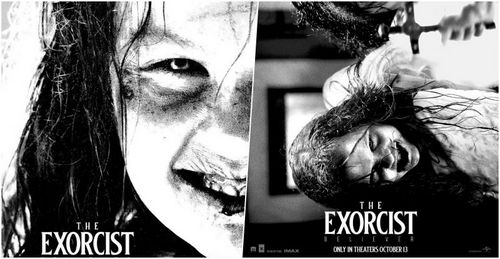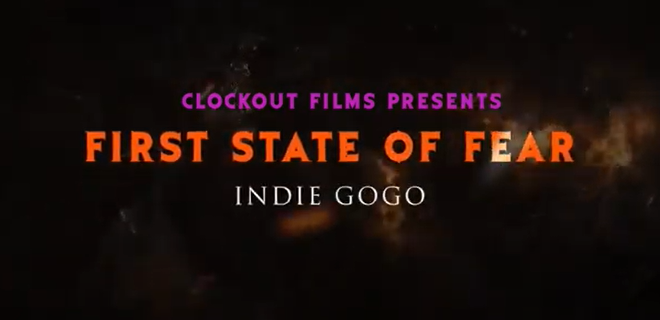

The horror of 2020 was about hope. It was about wonder, all the mysterious, unknowable things that keep us going in the darkest of times. Just a year later, the genre of 2021 was about reclamation, the “haunts and spooks and slashers to make it [all] better.” Both were incredibly painful years, marred by death, disease, a shifting economy, and an overwhelming sense of hopelessness. The horror genre interrogates that grief and makes something good of it. In 2022, horror again saved the year, though it did so with the simplest, most painful truth. The horror of 2022 was a reflection on loss. Random, arbitrary loss. The kind of loss that simmers in the marrow of our bones, a perennial part of our lives.
Bereavement communication literature often explores the role of empathy, control, and shared experiences in grappling with grief. There are best practices, some clinical, some interpersonal, though most relevant to the nature of horror—and the nature of cinema overall—is the persistence of shared experiences. Shared experiences accelerate the grieving process, in effect reminding the bereaved that it’s okay to grieve. That they are, for as pat as it sounds, not alone. That someone is there with them. After two years of profound loss, 2022’s horror was the shared experience the genre—and audiences everywhere—so desperately needed.
As a kickstart to the year, Radio Silence’s long-gestating Scream sequel arrived, grossing an impressive $140 million worldwide (never bet against horror) while also killing off series mainstay Deputy Dewey Riley. In September, Smile premiered, and for all its middling psycho-babble, it managed an unprecedented $216 million, becoming the year’s most successful horror debut. Ending aside, Smile was a capsule for two years of strife and trauma, the ostensible impossibility of moving on, of returning to some semblance of normalcy in a world markedly different now than it was in 2019. Even Halloween Ends, despite a day-and-date release on Peacock, was another reminder about how simply killing our monsters sometimes isn’t enough. They always come back, and not always how we think they will.
It all sounds pretty grim and hopeless, though it’s in those lowest moments that real healing can begin. The past few years took a lot away. Netflix’s Texas Chainsaw Massacre sequel, premiering in February of this year, exhibited the folly in healing without compromise. Try too soon, try without all the hard, uncomfortable work, and Leatherface will simply behead you as you move on to greener (less Texas-esque) pastures. Yet, there is healing and resonance among all the bloodshed.
Ti West’s double-whammy in both X and Pearl were profound meditations on aging and the loss of self. Collectively, the two have grossed $25 million. Watcher, Chloe Okuno’s astonishing debut about the loss of privacy and safety, grossed an impressive $3 million in limited release. The Harbinger, perhaps the most conspicuous interrogation of COVID-19 loss the genre has seen, is one of the year’s scariest (and best-reviewed) horror offerings.
2022’s horror was dangerous. It needed to be. Nope subverted extraterrestrial expectations in the best possible way. The aforementioned Halloween Ends barely featured Michael Myers. Orphan: First Kill went full camp with remarkable success. The spectacle of it all—sometimes good, sometimes bad, sometimes accounting for taste—was a necessary, urgent punch to the gut. It was a rallying cry, a wail. With so much lost and missing—incapable of being found again—it was the clamorous call for healing audiences everywhere needed. It was a year abounding with uncomfortable, though no less necessary truths. In Piggy, the loss bears a future. In Resurrection, Rebecca Hall is a fierce, tragic reminder of how innately difficult it is to confront loss. How difficult it is to confront the past and reconcile it with the present.
Art is a sensemaking process. Shared grief and shared loss can be understood. Visual media especially can foster transparency. It can foster community. Mike Flanagan’s The Midnight Club, no matter one’s thoughts, perhaps best conceptualizes the nature of shared grief and impending loss better than most. The loss is rendered symbolic and essential. It’s not pleasant and it isn’t fun, but it is necessary. The horror of the year, through its loss and death, united communities everywhere. As a mirror of our own world, it refracted all the painful feelings—the grief and regret—and rendered it clear; it rendered those feelings meaningful.
Horror has historically been both curative and urgent. No other genre better reflects the ennui and synchronous pain of the world better than it. With ghosts and knives, with monsters and Men, horror both illuminates and attempts to heal. For as painful as 2022 was, with the full breadth of the preceding two years now clear, horror was a respite. It was a pattern of and vehicle for social connectedness, for grieving together. For healing together. For being scared together. As always, there’s nothing else quite like it.
Test Tags: 2022 horror

Read The Full Article Here






















.jpg)









:quality(85):upscale()/2025/04/01/587/n/1922564/fe60d6be67ebe4b0bbd6f1.79749549_.png)



